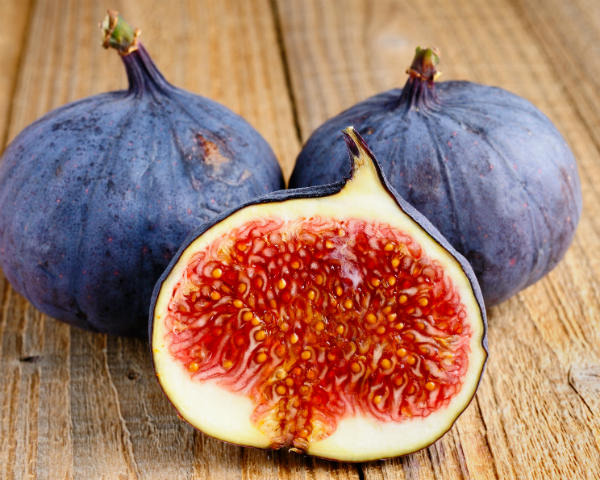In Season: Figs
By late August it is hard to imagine that there is anything new Mother Nature has left for us. Many of the soft fruits are finishing up their season, and we even start seeing some of the early fall apple varieties. But there is one last summer fruit that hits its stride in September — the second and largest harvest season for fresh figs has begun.
Figs are one of the oldest cultivated fruits in the world and can grow in a wide range of habitats. There are also two seasons for fresh figs — the first is called the "breba" crop, when fruit develops in the spring on old shoots or wood from the previous year, and is harvested in the early summer. This crop only serves to whet the appetite for the much larger crop that starts in early August and runs through October, weather-permitting. The peak typically occurs around Labor Day, when some of the best fruit of the year are available. There are dozens of commercial fig varieties produced in the U.S., but the three most common are the dark Black Mission, the Brown Turkey, and the green Kadota.
Fresh figs are one of the most difficult fruits to ship to the market due to their softness and thin, fragile skins. When selecting figs you should pick fruits that are soft to the touch, without any surface breaks. Another indication of ripeness is a clear, sweet sap that comes out of the side opposite the stem. Hard fruit is a sign the fruit was harvested immature and should be avoided.
Fresh figs will keep in your refrigerator for three to four days, if stored properly. Like berries, figs should be kept dry — so you should wait to rinse them off until right before you eat them. Immediately upon bringing them home, remove them from the container they are sold in, and if possible, store them in a single layer.
One of my favorite dishes involves figs and apricots. I cut them into bite-sized pieces and lightly toss them with some cow's-milk feta cheese and a bit of olive oil and balsamic vinegar. This colorful summer salad is excellent served with beef or pork. Figs are excellent roasted as well; remove the stem and brush the outside with a little olive oil to prevent sticking, then cook them like little kettles over indirect heat on your grill unit until most of the moisture bubbles away. Serve over ice cream or pop them in your mouth one-by-one.
Click here for four easy fig recipes.
— James Parker, global associate perishables coordinator for Whole Foods Market
